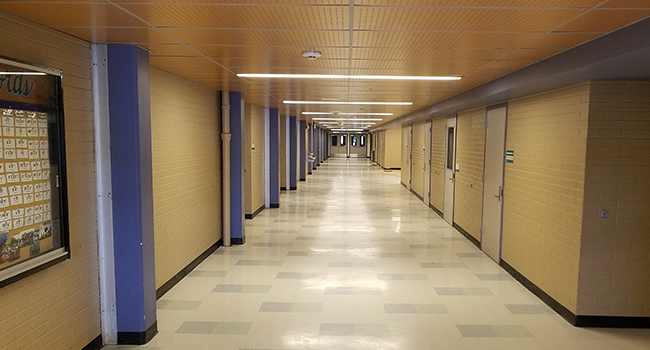
Michigan District Boosts Security After Increase in Threats, Bullying
New security measures include an emphasis on emergency training and drills, access control and student wellness.
- By Jessica Davis
- January 04, 2019
Tawas Area Schools in Tawas City, Mich., has taken steps to boost security and safety after an increase in threats and bullying problems in the last year. New security measures include an emphasis on emergency training and drills, access control and student wellness.
“We went 19 years without a threat in this district, and there’s been five in the last year,” Superintendent Jeffrey Hutchison told Iosco News.
Hutchison said that the district is focused on the safety of students and staff. He said TAS’s goals include protecting students from bullying and threats and focusing on the ways mental and physical health can affect student behavior and learning. The district also conducts multiple fire, tornado and lockdown drills.
“We’ve attacked these problems from a variety of ways,” Hutchison said.
One of TAS’s areas of focus is lockdown and active shooter training and procedures. Staff review lockdown procedures multiple times a year, and staff and administration train with Michigan State Police on best practices during active shooter situations. The trainings are specific to individual TAS campus buildings.
Each classroom in the district has a door barricade to reinforce interior doors during a lockdown, and each district building participates in lockdown drills involving students at least four times a year. Law enforcement is involved in many of these drills and provides feedback and suggestions in meetings afterward.
TAS has also upped its access control: exterior doors are locked while during school hours and visitor access is restricted to the front doors during the school day. At least three campuses have been remodeled to include a secure entrance that prevents visitors from entering the building without signing in and being cleared by staff in the front office.
According to Hutchison, the fire code requires the exits to be left open, but they are locked from the outside.
“The way our entrances are set up is, every person comes in and it funnels you to the office. You can’t get into our buildings without coming in and checking in,” he said. “We’ve got a pretty good, secure system there. Even when you get into the office, you can’t get out of the office without a remote buzz.”
As part of their efforts to reduce bullying and threats, the district is also working with students on social and emotional skills, Hutchison said. The district has increased its counseling and social work staff, including the addition of a school success liaison to help students handle their social and emotional needs.
“If you don’t feel like you fit in, you don’t belong; you’re going to disengage and that’s not good for you, educationally or socially,” Hutchison said.
“It all overlaps, so we try to increase our security, increase our safe practices, increase our counseling supports [and] increase, hopefully, the skill sets that our students have to deal with these feelings when they have them,” he said.
About the Author
Jessica Davis is the Associate Content Editor for 1105 Media.